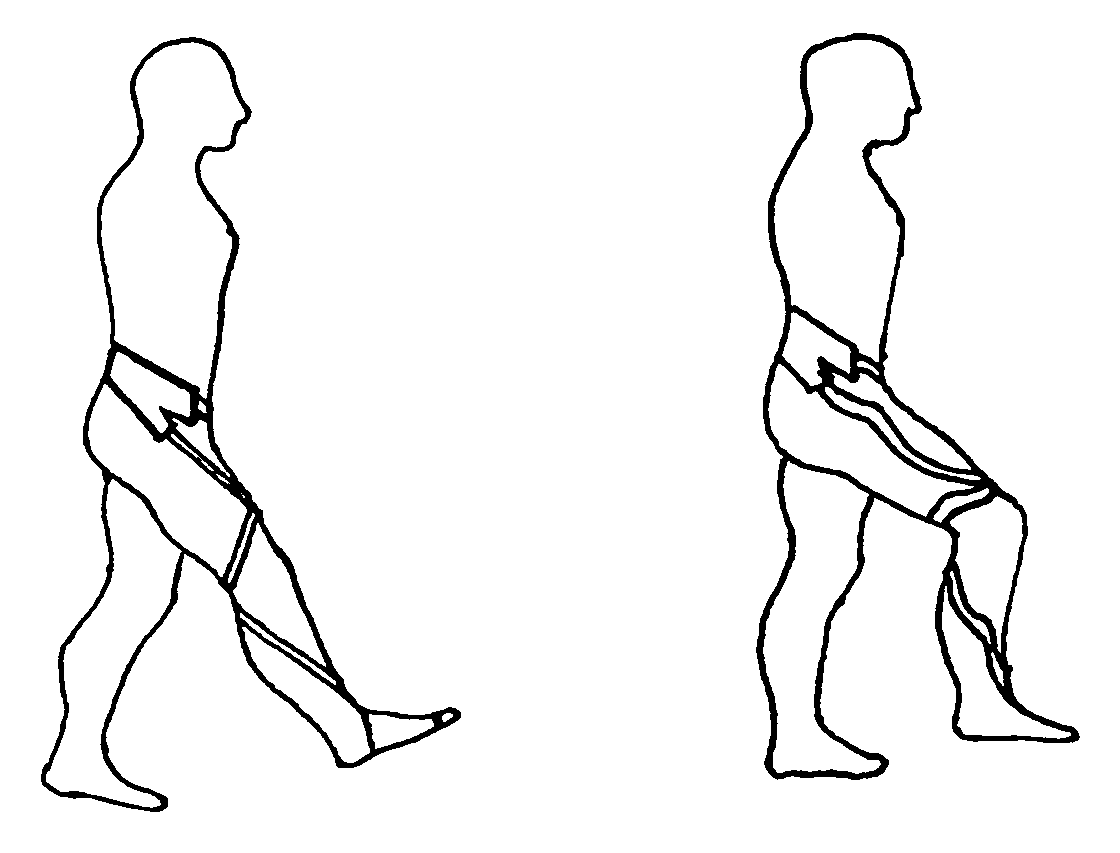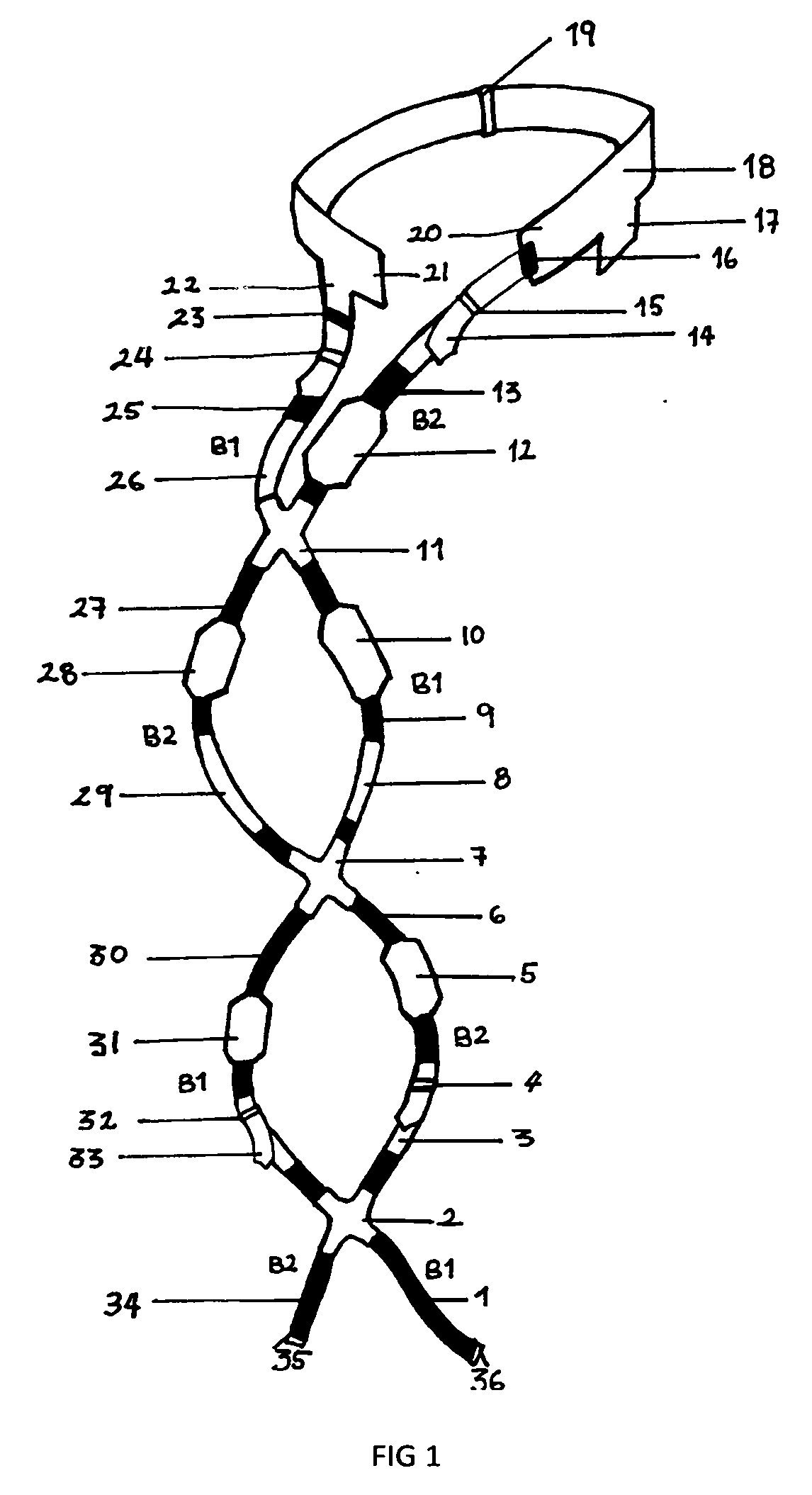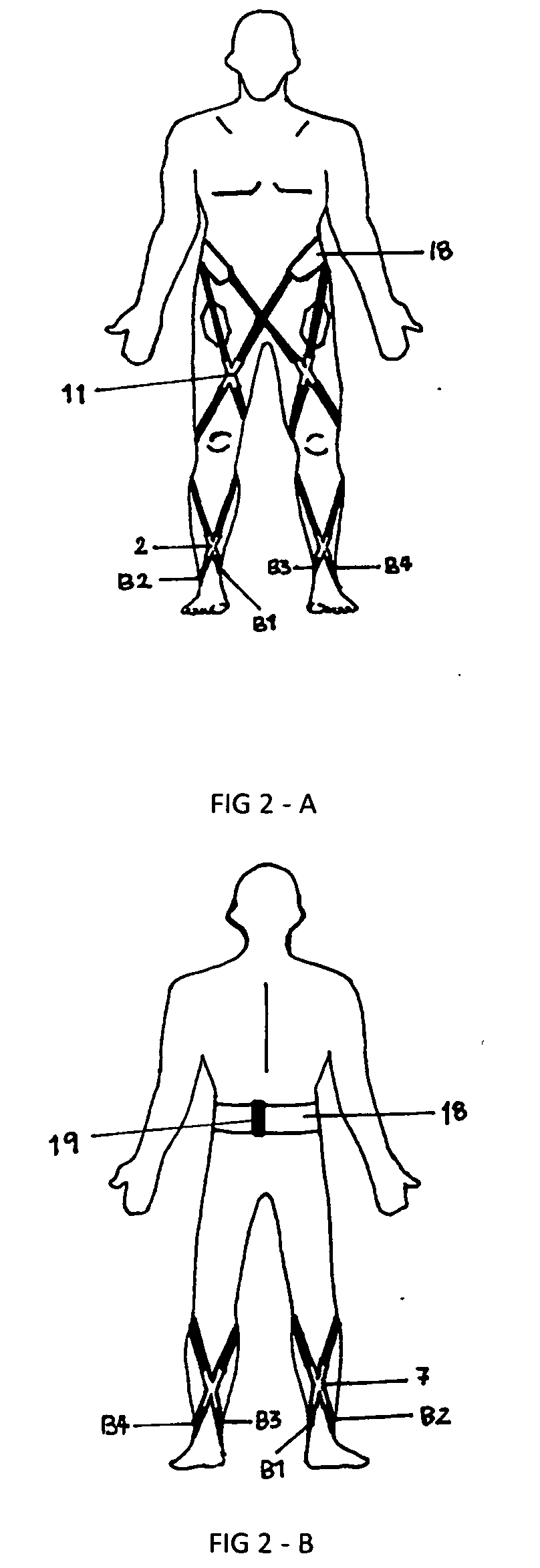Mechanical Lower Limb Assistive Device
a lower limb and assistive technology, applied in the field of wearable devices, can solve the problems of degrading the walking ability of elderly individuals, affecting the quality of life and independence of elderly people, and losing mobility
- Summary
- Abstract
- Description
- Claims
- Application Information
AI Technical Summary
Benefits of technology
Problems solved by technology
Method used
Image
Examples
Embodiment Construction
[0052]1. The description provided below is meant as an example and is not intended to limit the scope of the invention presented.[0053]2. FIG. 1 shows the first embodiment of the present invention, which is worn on one lower extremity to provide assistance in the walking (gait) cycle. The device consists of an upper body attachment, either a semilunar belt 18, or a shoulder harness, two continuous elastic bands wrapped in a specific manner, and a foot attachment (not shown in FIG. 1) which may be one of a shoe insole configured to attach to the bands, or an external strap to secure around the foot or shoe.[0054]3. The first elastic band consists of segments 1, 33, 30, 8, 9, 26, and 25 (herein referred to as component B1). The second continuous elastic band consists of segments 34, 3, 6, 29, 27, and 13, 14 (herein referred to as component B2). These segments form an unbroken continuous band or tube of any material or materials that provides an elastic force. The segments in the depic...
PUM
 Login to View More
Login to View More Abstract
Description
Claims
Application Information
 Login to View More
Login to View More - R&D
- Intellectual Property
- Life Sciences
- Materials
- Tech Scout
- Unparalleled Data Quality
- Higher Quality Content
- 60% Fewer Hallucinations
Browse by: Latest US Patents, China's latest patents, Technical Efficacy Thesaurus, Application Domain, Technology Topic, Popular Technical Reports.
© 2025 PatSnap. All rights reserved.Legal|Privacy policy|Modern Slavery Act Transparency Statement|Sitemap|About US| Contact US: help@patsnap.com



